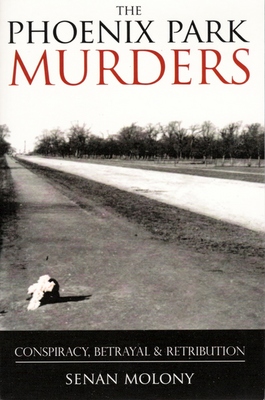The Phoenix Park Murders
Peter Berresford Ellis reviews The Phoenix Park Murders: conspiracy, betrayal and retribution by Senan Molony, Mercier Press, ISBN 1 85635 311 X, €12.99 pbk

THE PHOENIX Park Murders, the assassination of the newly appointed chief secretary for Ireland and his under secretary, on 6 May 1882, a short distance from the Viceregal Lodge, has always intrigued me.
If there was a single act that seemed timed to destroy the first political gains the Land League had made at that time, it was this. For some time I had wondered whether our old friends, the British secret service, had been behind it. It took place just four days after the resignation of chief secretary W E Forster and the release of Parnell and his colleagues from jail under the terms of the Kilmainham Treaty, which accorded the Land League a significant victory in their struggle against the landlords.
Reform was in sight and there was an agreement that the coercion acts would be dropped.
All that changed abruptly. The assassinated chief secretary, Lord Frederick Cavendish, was married to prime minster Gladstone's niece. And while the Irish people were not fond of Thomas Burke, the under secretary and head of the colonial civil service in Dublin Castle, it was realised that this act set everything at risk. Parnell wanted to resign. Britain was provoked into introducing new coercive measures in Ireland. The propaganda was enormous as the media described how men wielding surgical knives - how the public seemed to relish the dangers of surgical knives in those days and the Jack the Ripper killings were just a few years away - killed the two colonial officials.
The killings, as we know, were laid at the door of 'The Invincibles' - a breakaway group from the Irish Republican Brotherhood. How they were identified, how evidence was gathered solely by means of informers, is the story that Senan Molony, a political correspondent with the Irish Independent, tells here. He tells it with the breezy and easy-to-read style of a capable journalist, but that does not detract at all from a serious contribution to historiography.
A year later, five of the Invincibles were hanged, one had his death sentenced commuted to life, eleven were sentenced to various forms of penal servitude up to life, four were discharged, some on continuing bail, one died before trial. Of the five informers, four were secretly resettled but one was tracked down and assassinated by a surviving Invincible.
It's a strange story but one that has resonance with more recent Irish history. It's also a story that leaves some disturbing thoughts. Were those who were really responsible for the assassinations caught and punished or was this yet another example of a public trial of political expediency which seems endemic to British 'justice' in Ireland?
Connolly Association, c/o RMT, Unity House, 39 Chalton Street, London, NW1 1JD
Copyright © 2006 Peter Berresford Ellis

